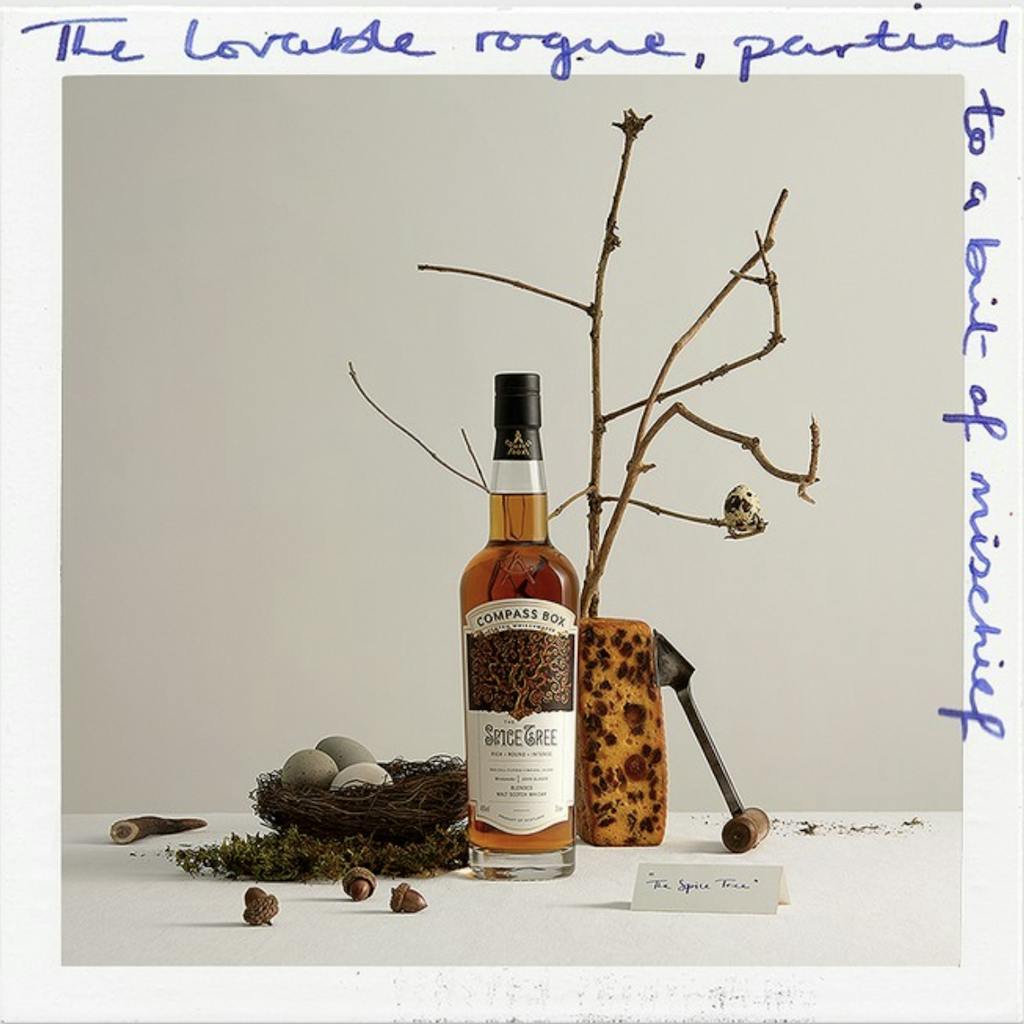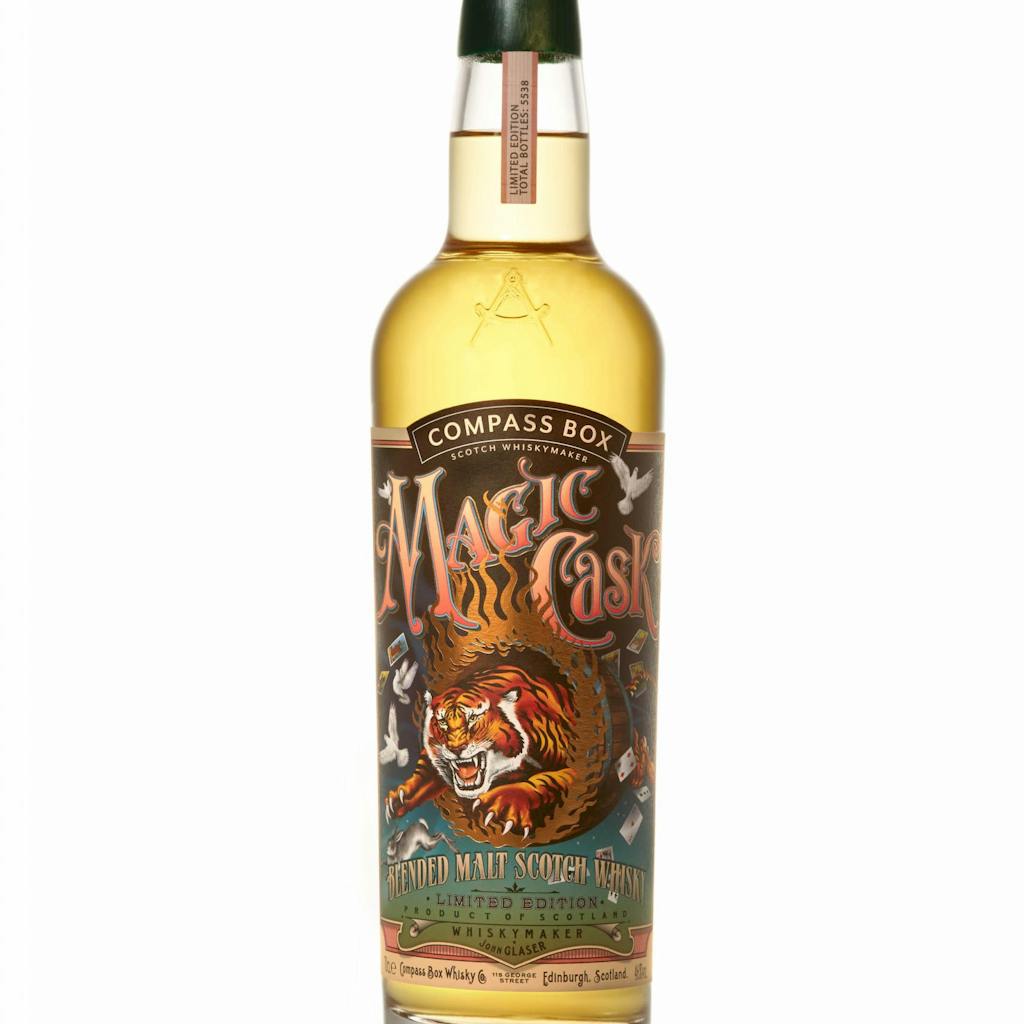Sales of off-premise premium spirits and high-end wine are up, according to NielsenIQ’s Alcohol in the Recovery Phase report.
That tracks—since we’re still largely cooking at home instead of eating out, we’re choosing to allocate our food and beverage dollars differently.
“Consumers can afford to buy a nice bottle of wine or whisky at the store that will get them through a couple of weeks, as opposed to spending the same amount at a restaurant for a single meal, which has fundamentally altered the buying dynamic,” says Scott Ellis, western region manager for Compass Box, a British whisky company headquartered in London. “That’s a big reason why people started buying more premium brands, but there’s also a general trend towards wellness now. Let’s drink less, but let’s drink better.”
High end spirits
Compass Box launched its products in the U.S. in 2001. When the pandemic hit, the company lost half of its on-premise sales overnight. However, by the summer of 2020, off-premise sales exploded and by the end of last year, sales were comparable with the year prior, even though on-premise business was all but dead.
Are you a buyer on RangeMe interested in Compass Box’s products? View their profile here.
Kiwi Spirit Distillery in Golden Bay, Motupipi, New Zealand, offers boutique gins, whiskies and liqueurs. There’s a lot of growth in high-end spirits in New Zealand, too, says Sales Director Isabella Knight.
“There’s a huge focus on quality rather than quantity by the consumer,” she notes. “Small, local producers are being sought out, the appetite for boutique products in all areas is growing fast. It’s an exciting industry, full of opportunity with an increasingly knowledgeable and passionate customer base.”

Are you a buyer on RangeMe interested in Kiwi Spirit’s products? View their profile here.
Top-notch wine
When it comes to wine, NielsenIQ’s figures show that sales of bottles costing $25 and more are up the most off-premise, followed by bottles in the $20 to $24.99 range, when comparing 2021 to 2019.
The latest IWSR Drinks Market Analysis figures show that the volume of premium-and-above wine and spirits in the U.S. grew by almost 7% in 2020. The London-based company forecasts that sales of these drinks will see about a 5% compound annual growth rate (CAGR) between 2020 and 2025.
The picture is similar in the U.K., says IWSR, where premium-plus wine/spirits grew about 5% in 2020, on top of 2% volume growth in 2019. In the U.K., they’re forecasted to grow by 2.5% CAGR in the 2020 to 2025 period.
According to Nielsen Scantrack data in the U.K., consumers are trading up, with wine costing £5 to £7 a bottle now accounting for 53% of the market, and pricier bottles (£7- £9) increasing their market share from 8% in 2019 to 11% last year. At the same time, sales of value bottles of wine (£3 – £4.99) fell almost 40%.
The picture in the stores
K-VAT (Abingdon, Va.) owns four standalone Food City Wine and Spirits stores in Kentucky. Sales lean heavily on spirits and most recently, says Dan Glei, executive vice president of merchandising/marketing, “on the mid- and particularly upper ranges, from a dollar perspective.” It’s primarily big brands such as Tito’s Vodka but boutique items bring excitement to the category, he says.

Driving this is brown spirits like bourbon, “and we sell everything we can get out hands-on,” he says. But premium vodkas continue to drive business.
“People aren’t going out as much as they used to so when you’re eating more meals at home you might want to treat yourself,” Glei says. It can feel like a perceived discount, he adds, versus buying an expensive cocktail on-premise.
Consumers are also looking for premium wine, most of which is domestically sourced, Glei says, and tends to be either big brands or small boutique offerings.
Innovation boom
Innovation is certainly driving sales in premium drinks, with everyone looking for something a little more exciting while we’ve been forced to curtail our social lives.
“In spirits, a lot of flavors have grown in vogue,” says Glei. Vodka flavors have been popular for ages, he points out, “but you see it now in bourbons and whiskies, with flavors like vanilla or maple or apple.”
Innovation “is the reason behind what we do,” says Compass Box’s Ellis. “We offer unique flavor profiles that have not been done before.” In fact, only two of the company’s products could be considered traditional, he says, with others offering unusual flavor profiles such as custard, marmalade and plum.
“We provide options that are not out there,” says Ellis, “and with our limited editions we really let our creativity loose.”
Whether it’s spirits or wine, unusual, boutique, and premium are the words of the day.
Are you eager to learn more about alcohol trends? Discover more alcohol trends from 2021 here.



